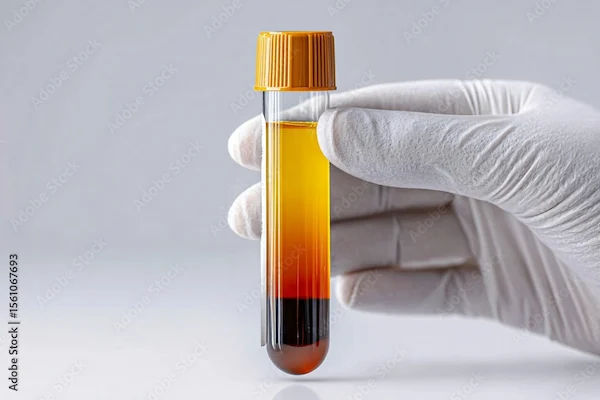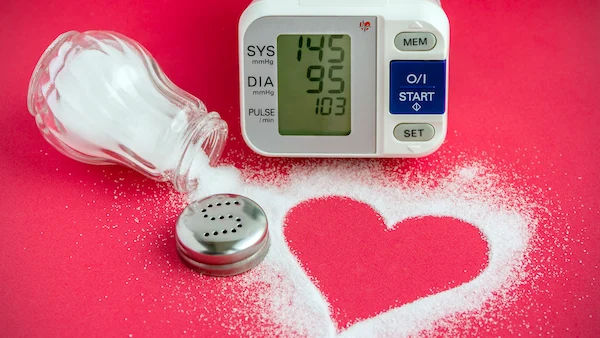Understanding Right Arm Pain Causes
Learn about the common causes of right arm pain, from muscle strain to nerve issues. Understand symptoms, diagnosis, and treatment options to manage pain and restore function.

Written by Dr. Shaik Abdul Kalam
Reviewed by Dr. Rohinipriyanka Pondugula MBBS
Last updated on 4th Aug, 2025

Introduction
Right arm pain can be a common yet concerning issue that affects many people at some point in their lives. While it may sometimes be due to simple muscle strain, it can also signal underlying health conditions that need attention. Understanding the causes, symptoms, and ways to manage right arm pain can help you take the right steps toward relief and recovery.
Common Causes of Right Arm Pain
Here are some causes of right arm pain:
1. Muscle Strain or Overuse
Heavy lifting, repetitive movements (like typing or sports), or sudden jerks can strain arm muscles.
Symptoms: Aching, stiffness, or sharp pain in the arm.
2. Nerve Compression (Pinched Nerve)
Conditions like cervical radiculopathy (nerve compression in the neck) or carpal tunnel syndrome (wrist nerve compression) can cause arm pain.
Symptoms: Tingling, numbness, or a burning sensation that radiates down the arm.
Consult Top Orthopaedicians
3. Joint Issues (Arthritis or Bursitis)
Osteoarthritis or rheumatoid arthritis can cause joint pain in the shoulder, elbow, or wrist.
Bursitis (inflammation of fluid-filled sacs near joints) may also lead to discomfort.
Symptoms: Swelling, stiffness, and pain that worsens with movement.
4. Tendinitis (Tendon Inflammation)
Overuse of tendons (common in athletes or manual workers) can lead to tendinitis.
Rotator cuff tendinitis (shoulder) or tennis elbow (outer elbow) are common types.
Symptoms: Localised pain, tenderness, and difficulty moving the affected joint.
5. Heart-Related Issues (Angina or Heart Attack)
Right arm pain (though less common than left arm pain) can sometimes indicate heart problems.
Warning signs: Chest discomfort, shortness of breath, nausea, or dizziness.
Seek emergency help if you suspect a heart attack.
6. Injury or Trauma
Fractures, sprains, or dislocations can cause sudden, severe pain.
Symptoms: Swelling, bruising, and inability to move the arm normally.
7. Poor Posture or Spinal Issues
Slouching or spinal misalignment can lead to referred pain in the arm.
Symptoms: Dull ache, stiffness, or weakness.
When to See a Doctor?
While mild arm pain often resolves with rest, consult a doctor if you experience:
Persistent pain lasting more than a few days.
Severe pain after an injury.
Numbness, tingling, or weakness in the arm.
Signs of a heart problem (chest pain, dizziness, sweating).
Managing Right Arm Pain at Home
Let us have a look at some of the ways to manage arm pain at home:
1. Rest and Ice/Heat Therapy
Rest the arm and avoid strenuous activities.
Apply ice packs (for swelling) or warm compresses (for stiffness).
2. Gentle Stretches and Exercises
Slow, controlled movements can improve flexibility.
Try shoulder rolls, wrist flexes, or elbow stretches.
3. Over-the-Counter Pain Relief
NSAIDs (ibuprofen, naproxen) can reduce pain and inflammation.
Use as directed and avoid long-term use without medical advice.
4. Ergonomic Adjustments
Improve posture while sitting or working.
Use wrist supports if typing for long hours.
5. Healthy Diet and Hydration
Anti-inflammatory foods (turmeric, ginger, leafy greens) may help.
Stay hydrated to keep muscles and joints lubricated.
When to Seek Professional Help?
If home remedies don’t help, consider:
Physical therapy for muscle/joint rehabilitation.
Consulting an orthopedist or neurologist for nerve-related pain.
Diagnostic tests (X-ray, MRI, or ECG) if needed.
Book a Consultation with Apollo 24|7
If your arm pain persists or worsens, don’t ignore it. Apollo 24|7 offers expert consultations and diagnostic services to help identify the cause and provide the right treatment. You can easily book an appointment online and get personalised care from trusted specialists.
Conclusion
Right arm pain can stem from various causes, from minor strains to serious health concerns. Listening to your body and seeking timely medical advice ensures proper care and prevents complications. With the right approach—rest, gentle exercises, and professional guidance—you can recover and regain pain-free movement.
Consult Top Specialists
Consult Top Orthopaedicians

Dr. Anil Pradeep Jadhav
Orthopaedician
23 Years • MBBS MS (Ortho)
Nashik
Apollo Hospitals Nashik, Nashik
(25+ Patients)

Dr. Bhanu Prakash Reddy Rachamallu
Orthopaedician
24 Years • MBBS , D'ORTHO, DNB (ORTHO), Mch (ORTHO), Fellow in ARTHROPLASTY
Hyderabad
Apollo Hospitals Jubilee Hills, Hyderabad
(75+ Patients)

Dr. Manoj Dinkar
Orthopaedician
15 Years • MBBS, Dip (Orthopaedics)
New Delhi
THE DOCTORS NESST, New Delhi
Dr. Sakthi Annamalai Chandranath
Orthopaedician
9 Years • MBBS., D.ortho.,
Madurai
A.C.Hospital, Madurai
Dr. Girimahesh Yadav
Orthopaedician
14 Years • MBBS, DNB Orthopedics
Nellore
ENEL Hospitals, Nellore
Consult Top Specialists

Dr. Anil Pradeep Jadhav
Orthopaedician
23 Years • MBBS MS (Ortho)
Nashik
Apollo Hospitals Nashik, Nashik
(25+ Patients)

Dr. Bhanu Prakash Reddy Rachamallu
Orthopaedician
24 Years • MBBS , D'ORTHO, DNB (ORTHO), Mch (ORTHO), Fellow in ARTHROPLASTY
Hyderabad
Apollo Hospitals Jubilee Hills, Hyderabad
(75+ Patients)

Dr. Manoj Dinkar
Orthopaedician
15 Years • MBBS, Dip (Orthopaedics)
New Delhi
THE DOCTORS NESST, New Delhi
Dr. Sakthi Annamalai Chandranath
Orthopaedician
9 Years • MBBS., D.ortho.,
Madurai
A.C.Hospital, Madurai
Dr. Girimahesh Yadav
Orthopaedician
14 Years • MBBS, DNB Orthopedics
Nellore
ENEL Hospitals, Nellore




